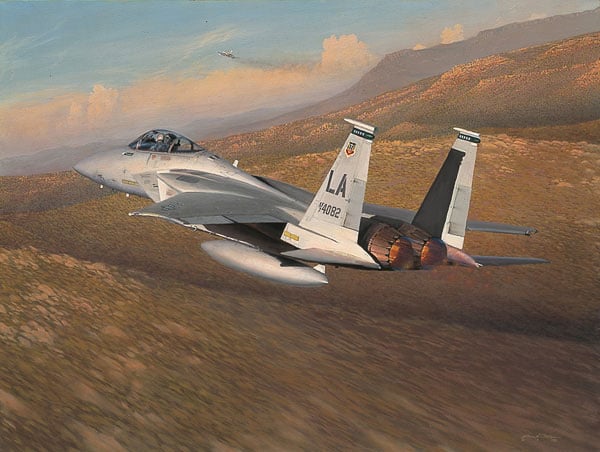Advantage Eagle (F-15)
Air superiority requires responsive agility. Speed, sought since Barney Oldfield raced an airplane around an auto track in 1912, isn’t a complete answer. Maneuverability is key. And when specifications were issued for the new fighter aircraft in 1965, performance was the goal. The F-15 Eagle, advanced, agile and fast, was the result.
Luke Air Force Base, the 58th Tactical Fighter Training Wing and its famous “Triple Nickel” 555th Tactical Fighter Training Squadron were the first recipients of the F-15. From the first delivery on November 14, 1974, the eagle proved equal to its nickname. With its better than one-to-one thrust ratio, the fighter can accelerate when flying vertically. One of its pilots said, “The Eagle can out-climb, out-maneuver, and out accelerate any fighter threat in existance or on the horizon.
Currently the top-of-the-line fighter of the U.S. Air Force, the F-15 is capable of Mach 2.5, accelerating in vertical climb and, with an aux tank, flying 1,300 to 1,500 miles unrefueled.
Bill Phillips flew from Luke AFB with the wide expanses of the Sonoran Desert below, and, at 50 knots, he saw the ground blur and felt the surge of energy. In his translation of that momentum to canvas, you can feel the Eagle’s speed and power.
Advantage Eagle (F-15)
William Phillips
This Piece has been Signed by William Phillips

